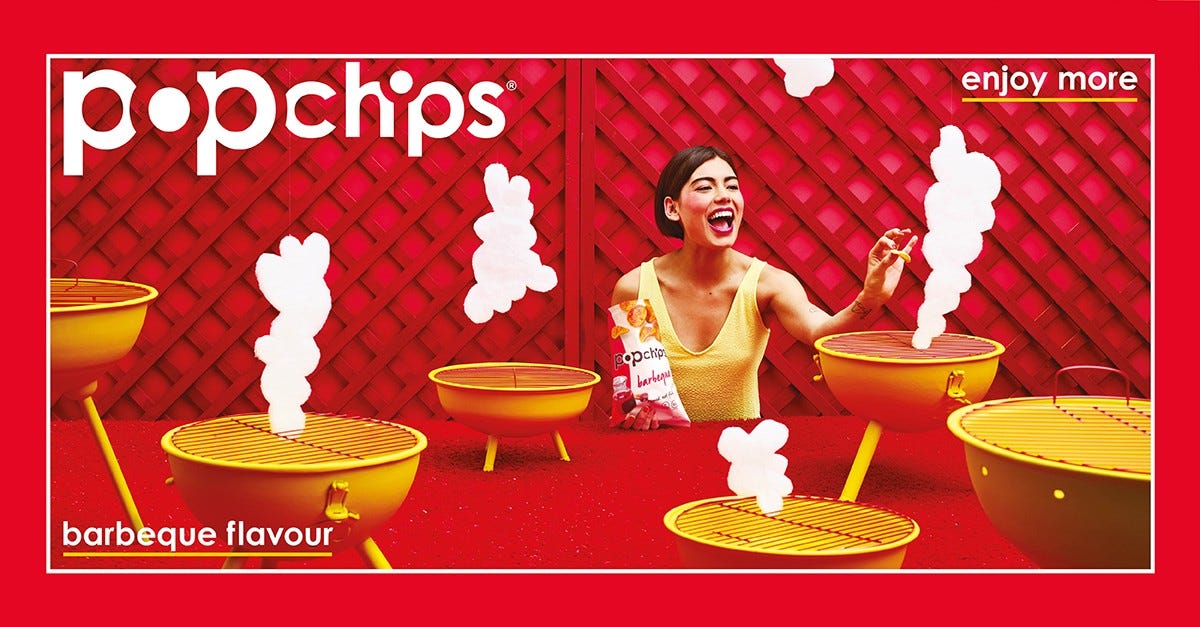How challenger brands scale

Analysis
The most successful challenger brands are those that respond to cultural tensions. They attempt to resolve acute conflicts people feel between their own lives and society’s prevailing ideology.[1]
popchips are the UK’s fastest growing snack brand because on every level they disrupt the funny, but sinister, implications of the ‘women laughing alone with salad’ meme[2]– that women can only be happy if they are depriving themselves.
These images, although a sardonic view of clueless marketing, also demonstrate the expectations society has around food and gender.
For years, unhealthy snacking has been a man’s pursuit. Gary Lineker and Walkers, McCoys, Pot Noodle, Tango to name but a few. These brands have used irreverent humour to convince people the taste is worth it, even though they know the product is bad for them.

As societal trends around healthy eating changed, the ‘better for you’ category emerged, with its own semiotics. It portrays women as dieters, either happy or sad about the measures they are taking to lose weight / live healthier lives. It is bland, niche, apologetic and permissive. The outtake being the product will taste bad, a compromise for being healthy.
popchips are on a mission to challenge these societal assumptions on every level — popping to create crisps full of flavour, but half the fat of traditional fried crisps.
The task is how to scale the business to make this challenger behaviour the new normal.
1. Be loud and proud
Create a highly visible brand world that demands attention. Distinctive, colourful and bold. Both visually and in terms of brand beliefs. Command the stature of the mainstream.
2. Make the mainstream look out-dated and irrelevant
No hedging, absolute commitment to a new way that everyone should fall in love with. Modern, yet accessible, but making the old guard look out of touch.
3. Empower, don’t give permission
View the audience as citizens, not consumers. Give them the opportunity to participate in your beliefs not just buy your product.
4. Your product is your disruption
Don’t hide it in a generic millennial ‘challenger’ lifestyle campaign. Be proud of your innovation.
5. Reach, reach, reach
You want the world to fall in love with and adopt your disruption. Make sure enough people see it and then talk about it. Don’t get tied up in segmentation knots.

[1]What Becomes an Icon Most, Douglas B. Holt, Harvard Business Review, March 2003.
[2]https://www.thehairpin.com/2011/01/women-laughing-alone-with-salad/





